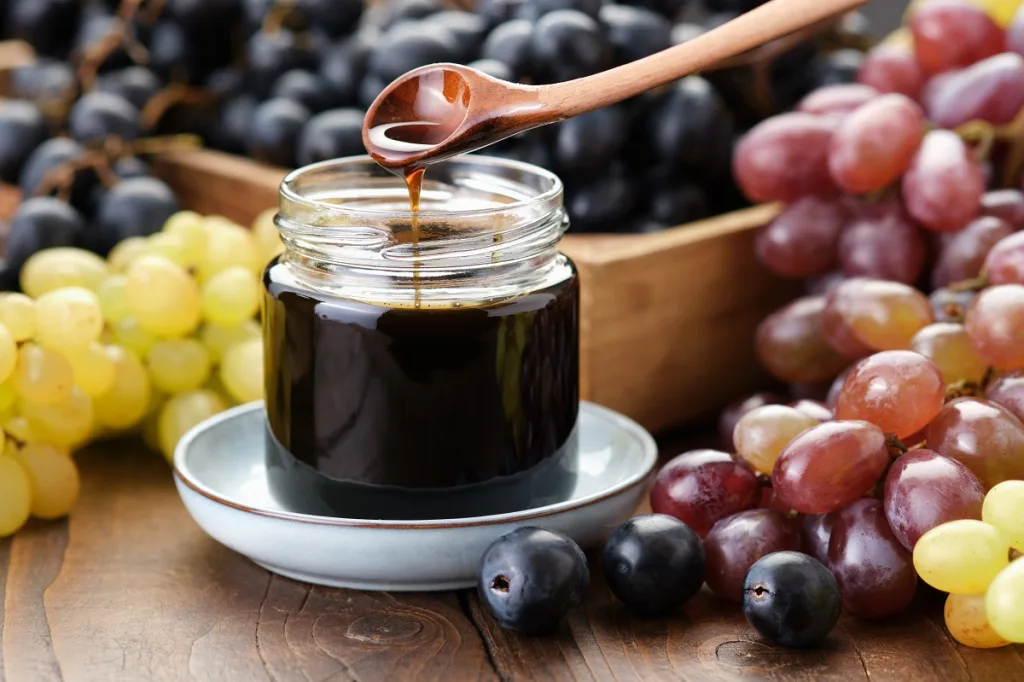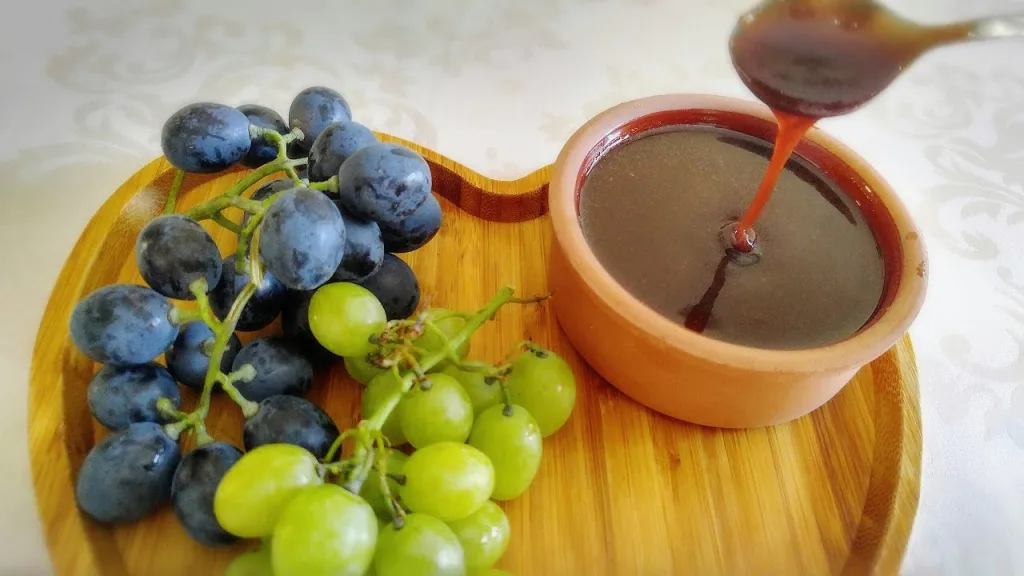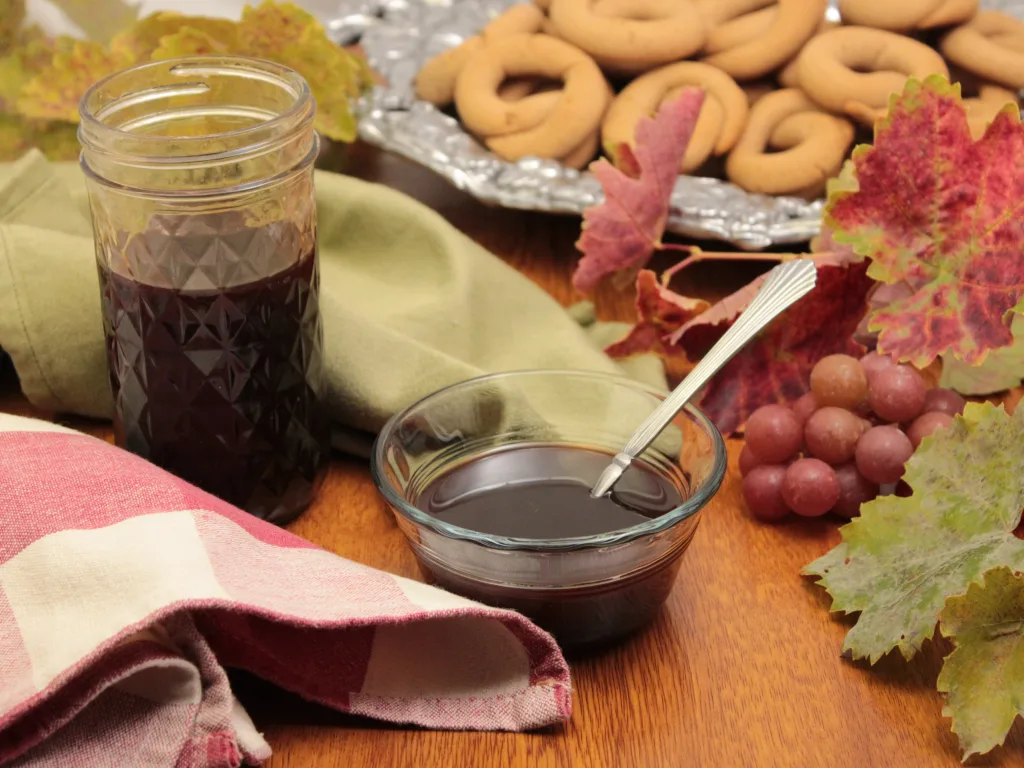An integral part of culinary traditions from Ancient Greece until today, petimezi is nestled in the wisdom of the Mediterranean diet, hiding within it the sweetness of sunny vineyards and the know-how of our ancestors.
Petimezi, the "honey of the poor" that many generations grew up with, belongs to the most nutritious, natural sweeteners, and as evidenced by modern nutritional trends, it is coming back to the fore.
The production and use of petimezi in Greece, the Balkans and Turkey are due to the long history of grape cultivation, cultural traditions, culinary heritage, and the practical need to utilise the surplus fruit and preserve it throughout the year.
One of the oldest valuable foods with health claims

Its journey begins in the vineyard, where the grapes enjoy the warmth of the sun, absorbing all the special characteristics that make a microclimate special, giving a unique flavour to the final product.
Its manufacturing process involves the grape being simmered until it turns into a thick, dark syrup with a concentrated sweetness, slightly bitter and slightly acidic aftertaste that is easily metabolised.
This is the oldest sweetener made by man and is rich in antioxidants, vitamins A, B, and C and minerals such as potassium, iron, calcium and magnesium.
Ancient Greek epsima syrup became decoctum and defritum and ended up as pekmez/petimezi
The first name was "epsima", describing the grape juice concentrated by boiling and used as a cheaper sweetener than honey.
Several centuries later, the Romans show a more diluted syrup, the decoctum, referred to as a "magic" potion or healing decoction or medicinal substance, and a decidedly more concentrated decoction, the Latin defritum or defrutum, a thick type of sauce or syrup made from grapes that are simmered until they lose 50% of their liquid.
Petimezi from other fruits
The petimezi technique inspired its preparation with other fruits such as figs, apples, plums and apricots.
At this point, it should be said that the traditional origin and naming are disputed as some call the final product molasses, others fruit syrup, fruit honey or even the modern, falsified and unfounded name "vegan honey."
In Eresos, Lesvos, they traditionally prepare petimezi from figs. These ripe August figs are simmered until the liquid is reduced enough. When the juice is concentrated and the sugars have caramelised, it is filtered and bottled.
In the village of Filia in Western Lesvos, the petimezi fig is flavoured with leaves or oil of safflower root. We find roughly the same method in producers in Northern Evia, where they prepare "sykomelo" or fig syrup.
Petimezi in other countries

In northeastern Bosnia, known for its smoked plums, we find a traditional pekmez made from plum juice with a characteristic smoky flavour.
Turkish grape molasses, pekmez, can be made from fresh and dried grapes, thus ensuring that production can occur at any time of the year. The only difference in the process is noted at the beginning, where the dried grapes are first boiled in water to obtain the moisture and consistency needed to set the syrup.
Turkish Pekmez, in addition to grapes, is also made from other fruits such as mulberries, figs, apples and sugar beets.
In traditional cuisine

Beyond its role as a syrup, petimezi is a versatile ingredient in sweet and savoury dishes. Its velvety texture and distinctive flavour make it a valuable addition to desserts, meat marinades, salad dressings and more.
In the traditional cuisine of Greece we find retselia, i.e. spoon sweets that are tied with petimezi instead of sugar syrup, and recipes such as petimezopita, mustokoulouras, and savourry versions such as the Limnian aftoudia with petimezi and grated honeydew.
Yianna Balafouti is a columnist for Olive Magazine.
READ MORE: NOYNOY, a household name in Greece.


